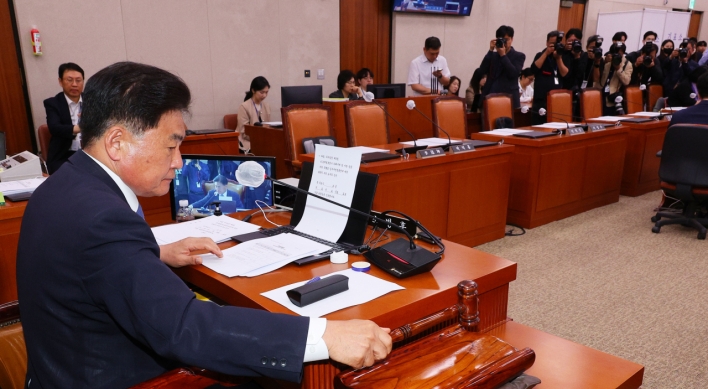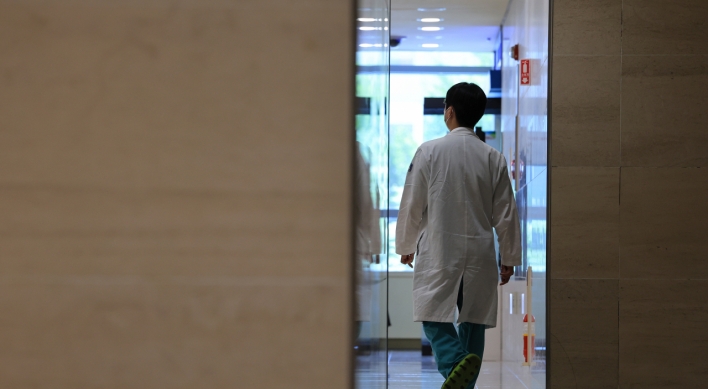[Robert J. Fouser] South Korea’s political realignment
By Robert J. FouserPublished : April 23, 2020 - 07:00

The ruling party and its allied Together Citizens’ Party now hold 180 seats, or 60 percent, of the total 300 seats. This will make it easier for President Moon Jae-in to push his legislative agenda.
As the election cycle approached, conservatives who had been in disarray since the impeachment of former President Park Geun-hye in late 2016, managed to unite, but it was too late. The United Future Party and its allied Future Korea Party managed to win on 103 seats, or just 34 percent. This was the worst showing for conservative parties in the post-1987 democratic era. The United Future Party swept its traditional stronghold in the Gyeongsang-do region but fared poorly elsewhere.
Before the current virus pandemic, grumbling over a slow economy and conservative unity suggest a close election. President Moon has so far avoided the steep decline in popularity that bedeviled his predecessors, though his popularity hovered below 50 percent for most of 2019.
The COVID-19 pandemic shocked South Korea, particularly the sudden outbreak in Daegu. The government moved quickly to contain the disease without widespread lockdowns that have occurred elsewhere. By the time of the election, other nations were looking at South Korea as a model of how to contain the disease. As a result, President Moon’s popularity moved past 50 percent, and voters rewarded the president with a landslide victory.
At 66 percent, turnout was the highest since 1992, as voters flocked to the polls to show their support for democracy at this difficult time. Voters wore masks and stood at least 1 meter apart in line. Once in the polling station, they had their temperatures taken and were given hand sanitizer and plastic gloves to vote. The precautions helped ensure that voters would feel safe voting. The efforts to make voting safe offer hope to other nations that elections can be held safely once the spread of COVID-19 has been controlled.
The landslide win for the Democratic Party means that it has become the majority party at all levels of government for the first time in history. In 2004, the Uri Party, the party of President Roh Moo-hyun and the forerunner of the Democratic Party, won a majority in the National Assembly. Conservative parties, however, won landslide victories in local elections in 2002 and again in 2006, thus shutting out the Uri Party at the local level during Roh’s presidency.
The local elections in 2018 produced a landslide for the Democratic Party. Of the 16 provincial governors and metropolitan city mayors, the party now holds 14. It holds 652 of the 824 seats in provincial and metropolitan city assemblies. The 60 percent turnout was the highest for local elections since the first one held in 1995.
The decisive shift toward the center-left began with the massive demonstrations calling for the impeachment of the President Park Geun-hye in late 2016. Her removal from office in March 2017 and conservative disarray set the stage for Moon Jae-in’s victory in May. Successful hosting of the PyeongChang Winter Olympics in early 2018 and a lessening of tensions with North Korea fueled the Democratic Party’s landslide in the local elections that year. Success in dealing with pandemic propelled the Democratic Party to another landslide last week.
In the sweep of Korean history, the rise of the center-left Democratic Party to dominance means the end to the assumption that conservatives forces are de facto rulers of Korea who tolerate occasional center-left strength only to return to dominance. The three elections since the impeachment of Park has produced the first major political realignment of the post-1987 democratic era.
The question for the future is how long the realignment will last. The root cause of the realignment was a collapse in public trust in conservative parties combined with successes on Moon’s watch. Democratic Party dominance will likely continue as long as the party holds public trust and achieves policy successes.
The COVID-19 pandemic is creating deep economic stress around the world. How Moon and the Democratic Party deal with the economic fallout from the pandemic will determine the length of the realignment. If policies successfully limit the damage and lead to recovery, then voters will reward the party well. If not, then they will be open to trying something different.
Robert J. Fouser
Robert J. Fouser, a former associate professor of Korean language education at Seoul National University, writes on Korea from Pawtucket, Rhode Island. He can be reached at robertjfouser@gmail.com. -- Ed.









![[Kim Seong-kon] Democracy and the future of South Korea](http://res.heraldm.com/phpwas/restmb_idxmake.php?idx=644&simg=/content/image/2024/04/16/20240416050802_0.jpg&u=)








![[Today’s K-pop] Zico drops snippet of collaboration with Jennie](http://res.heraldm.com/phpwas/restmb_idxmake.php?idx=642&simg=/content/image/2024/04/18/20240418050702_0.jpg&u=)